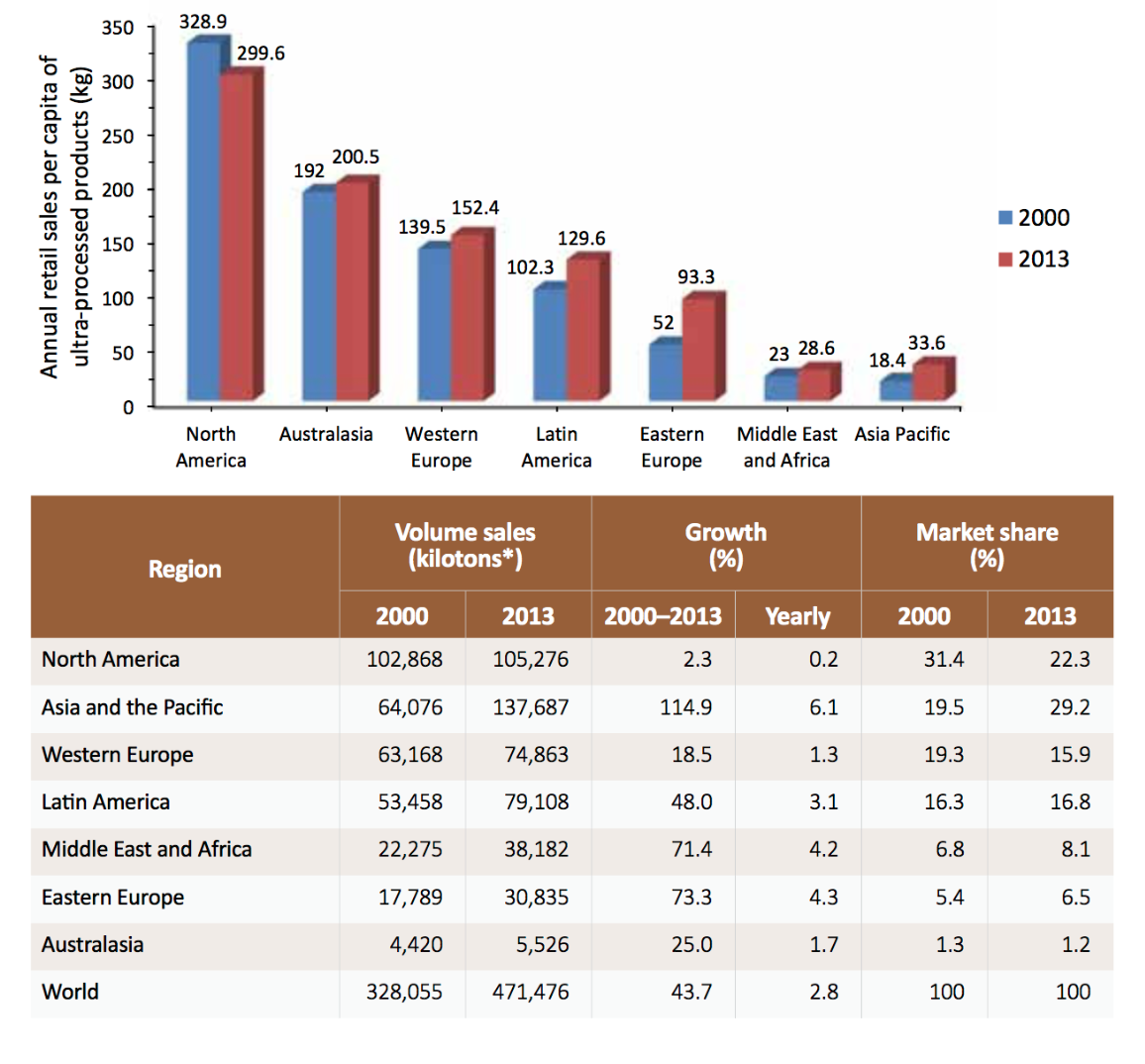Consumption of processed foods has continued to increase in recent decades. The figures for those who are overweight, obese and suffering from chronic diseases continues to grow worldwide, and are becoming increasingly worrisome.
According to a study conducted by the University of Paris-Sorbonne, eating ultra-processed foods daily and for an extended period of time can shorten our lives. Therefore, knowing what foods we’re consuming, by reading and understanding the nutritional labeling, are key strategies for benefiting our health.
Tania Mesa – Director of Neolife’s Nutrition and Nursing Unit
Alejandro Monzó- Neolife Nutrition and Nursing Unit
Eating a great deal of ultra-processed foods could be a sign of other unhealthy habits.
Practically all foods that are currently consumed are processed in some way. Food processing has played a fundamental role in human evolution and adaptation. However, since industrialization food processing has developed at a high speed thanks to food science and other types of technology.
As a definition, processed foods are industrial formulations made from substances derived from food or synthesized from other organic sources (1,2). In their current forms, they are modern industrial inventions related to advances in science and food technology. Most of these products contain few whole foods, or none at all. In addition, they are presented ready to be consumed or to heat up, and therefore, require little or no culinary preparation. Below we present their characteristics (1):
- Nutritionally speaking, they are unbalanced. They have a high calorie content and a low nutritional value. They have a high content of simple sugars, saturated and/or trans fats, and salt. They have a low content of fiber, proteins, micronutrients and bioactive compounds. Their true nature is often concealed by a sophisticated use of additives.
- Their ingredients and formulation make these products highly palatable, creating almost an addiction in the consumer. Certain characteristics incorporated into these foods by applying technologies can affect the mechanisms of the digestive system and the brain, distorting the satiety signal, which can lead to their excessive consumption.
- They are easy to consume. Most of them are in the form of ready-to-eat snacks, drinks or desserts, so utensils are often not required for eating them. They are designed to be consumed anywhere, and are available in all kinds of stores or outlets for non-food products.
- Ultra-processed foods mimic food. Their formulations employ technologies aimed at mimicking the appearance, shape and sensory qualities of food. They also create a false impression of being healthy, due to the addition of synthetic vitamins or minerals, which allows manufacturers to incorporate “health claims” into their advertising or packaging. even though the product is not healthy.
- They are products from multinational companies and other corporations that buy or produce the necessary industrial ingredients at a very low cost and operate with economies of scale. These companies spend huge budgets on advertising and promotional campaigns.
A French study published in the American medical journal “JAMA Internal Medicine” shows that every 10% increase in the intake of ultra-processed foods is related to a 14% increase in mortality over the following eight years (2). These foods are generally very energetic at the expense of refined carbohydrates, very unhealthy fats and salt, and are of very low nutritional quality. The researchers point out that these characteristics could explain, in part, the development of chronic noncommunicable diseases, such as obesity, cardiovascular diseases, hypertension, diabetes, and cancer among those who consume them (2).
Scientific evidence shows that ultra-processed products promote weight gain and obesity. The results of these studies reveal that the level of consumption of ultra-processed products correlates closely with the general quality of food and with the risk of obesity and non-transmissible chronic diseases, and therefore higher mortality . The WHO defines snacks and fast food, as well as soft drinks, all of which are ultra-processed, as obesogenic (1,2).
A report prepared by the Pan American Health Organization (PAHO) on ultra-processed food and beverages in Latin America, shows that sales of ultra-processed products vary widely in volume between different regions of the world. Figure 1 shows sales in 2000 and 2013 in seven regions. Worldwide, sales of ultra-processed products increased by 43.7% during that period, and this increase continues at present (1).

Ultra-processed foods and products are defined and identified according to the NOVA food classification system, recognized by health agencies, including the United Nations Food and Agriculture Organization (FAO). The NOVA system groups food according to the nature, purpose and degree of processing. It comprises four groups that are mentioned below (1,2,3):
1. Raw or minimally processed foods
Unprocessed foods are parts of plants or animals that have not experienced any industrial processing. Minimally processed foods are unprocessed foods that are modified so that they do not add or introduce any new substances (such as fats, sugars or salt), but they can involve certain parts of the food being removed. They include fresh, dried or frozen fruit; vegetables, grains and legumes; nuts; meats, fish and seafood; eggs and milk. The minimal processing techniques prolong the duration of the food, help in its use and preparation, and give it a more pleasant taste.
2. Processed culinary ingredients
Culinary ingredients are substances extracted and purified by the industry from food components or obtained from nature (such as fats, oils, salt and sugars). In general, these substances are not consumed on their own. Their main role in food is in the preparation of food, and they make the dishes and meals tasty, varied, nutritious and enjoyable.
3. Processed foods.
Processed foods are made by adding fats, oils, sugars, salt and other culinary ingredients to minimally processed foods, to make them more long-lasting and, generally, tastier. These types of foods include simple breads and cheeses, fish and seafood, salted and cured meats, fruit, legumes and canned vegetables.
4. Ultra-processed products
As defined above, some substances used to make ultra-processed products, such as fats, oils, starches and sugar, are derived directly from food. Others are obtained by the additional processing of certain food components, such as the hydrogenation of oils (which generates toxic trans fats), the hydrolysis of proteins and the “purification” of starches. The vast majority of the ingredients in ultra-processed products are additives. Ultra-processed products are often given more volume by adding air or water, and even synthetic micronutrients can be added to fortify them.
In contrast, reading and interpreting the nutritional labeling allows us to know the food, its origin, its mode of preservation, the ingredients it is composed of or the nutrients they contribute to our diet. According to the WHO, the insufficient intake of fruit and vegetables is causing 3.9 million deaths per year. This nutritional deficit is among the top ten mortality risk factors for obesity and related diseases (4).
It’s clear that eating habits have changed in society, with a higher risk of the prevalence of diseases. In short, the current diet is far from being something healthy and efficient in terms of the environment, and is gradually moving away from the logical consumption habits of human beings and the basis of a health diet. Food has become a business for the food industry.
At Neolife we strive to ensure that our patients can recognize healthy foods in their daily diet the, interpret the labeling of the products ion their shopping baskets and distinguish ultra-processed foods despite the pressure of advertising and fashion trends.
BIBLIOGRAPHY
(1) (2015). “Ultra-processed foods and beverages in Latin America: trends, effect on obesity and implications for public policies”. WHO. Department of non-communicable diseases and mental health. Washington D.C. URL: https://iris.paho.org/xmlui/bitstream/handle/123456789/7699/9789275118641_eng.pdf
(2) Schnabel L. y otros. (2019). “Association between ultraprocessed food consumption and risk of mortality among middle-aged adults in France”. JAMA Intern Med. URL: https://www.ncbi.nlm.nih.gov/pubmed/30742202
(3) Monteiro C.A. y otros. (2016). “NOVA. The star shines bright”. Food classification. Public health. World Nutrition January-March 2016, 7, 1-3, 28-38. URL: https://archive.wphna.org/wp-content/uploads/2016/01/WN-2016-7-1-3-28-38-Monteiro-Cannon-Levy-et-al-NOVA.pdf
(4) (2018). “Alimentación sana”. URL: https://www.who.int/es/news-room/fact-sheets/detail/healthy-diet & https://www.who.int/elena/titles/fruit_vegetables_ncds/es/
